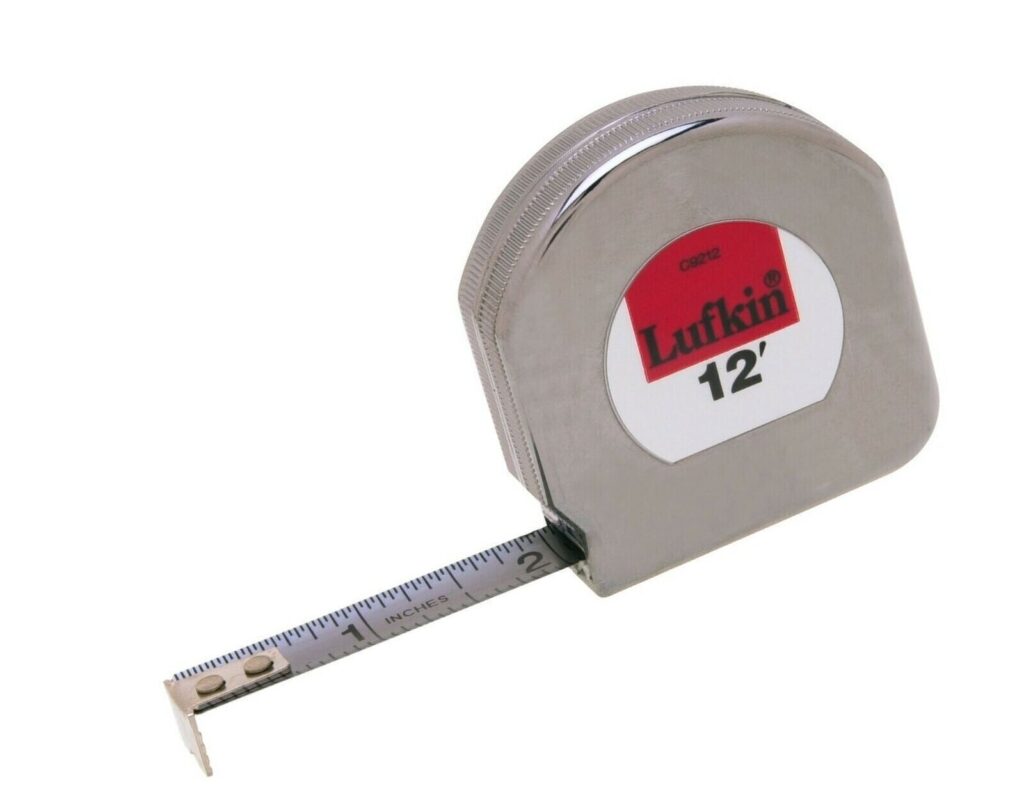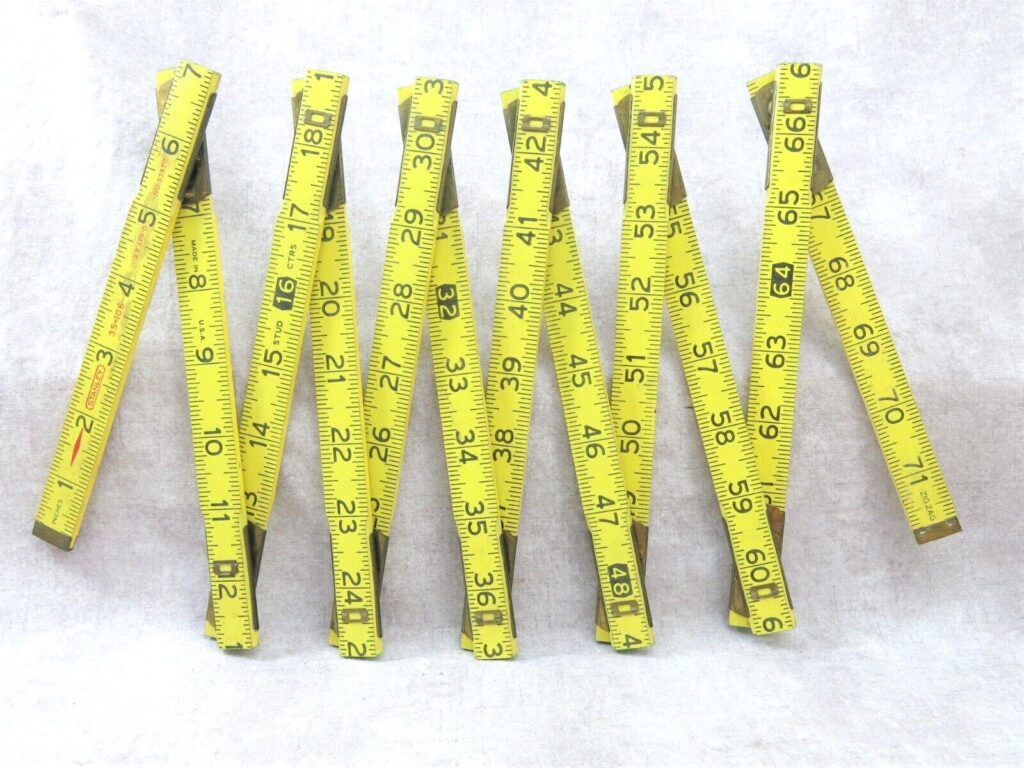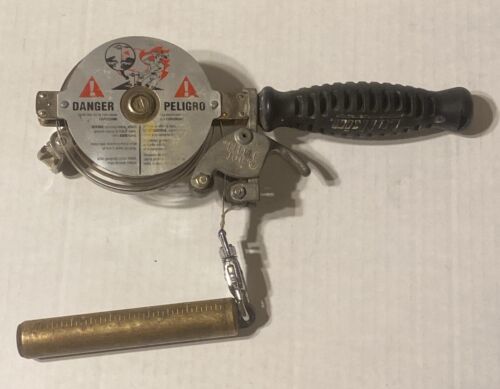#Measuring #Tapes #Collectible #Toolbox #Staples #WorthPoint

Ask a carpenter or sewist to present their most-prized tool, and they’ll likely hand you a tape measure. Regardless of size or durability, early versions of these trusty gadgets make for crowd-pleasing collectibles.
It Started with the Hoop Skirt
In the 1840s, the hoop skirt reigned in fashion. It replaced the earlier practice of layering bulky petticoats to create a tiny waist with a substantial dome-shaped skirt. Also called “caged crinoline,” this apparatus featured a series of whalebone or metal concentric hoops that formed the frame over which the skirt hung to create the desired fashionable bell shape. Some hoop cages required more than 180 feet of wire, and measuring such extensive lengths was challenging with existing tools.
However, in 1829, British industrialist James Chesterton changed things up by patenting a chain measure housed in a small case. Like any new invention, Chesterman’s tool was reserved only for the wealthy, selling for $17 each—equal to about $300 by today’s standards.
By the late 1860s, Alvin J. Fellows of Connecticut took the tool to a new level by patenting a “spring-click” device, which allowed the user to lock the tape in any desired extended position.
Although the invention was a game changer, it still took time for carpenters to embrace it, as they preferred the folding wooden ruler.

folding ruler. It was sold for $12.75 in January 2024.
Tape Measures for the Masses
As the tape measure became a more common tool, it morphed into a creative collectible, especially among crafters and sewists who used it for lighter tasks. By the early 1900s, the devices became curiosities that make for delightful collectibles today, so when you’re out on the thrift trail and come across small figurines, check and see whether a small tape measure is hiding inside.
A quick search of the WorthPoint Price Guide revealed thousands of unique tape measures, including some that resembled toys. For example, see the 1800s figural cat and ball piece in which the cat’s tail turns to retract the tape housed in the ball. I also found others made into petite brass teapots, porcelain cherubs, people, musical instruments, animals, household items like radios, and even golf balls.
Carpenters and workers required durability, and by the late 1800s, their tape measures were just as straightforward and solid as they were, whether made from leather and cloth or metal.
These hefty tools were created in twenty-five- to one-hundred-foot lengths and helped survey land or measure cut timber. Other devices featured a plumb bob weight that dropped into oil tanks to measure the amount.
I recently attended an Ohio flea market and antique show and picked up a few vintage fifty-foot tape measures with names like Lufkin and Keuffel & Esser. Simple and sturdy, they carried patina from use, making them all the more lovely. It’s no wonder that their steadfast good looks and accessible price points have made them enduring collectibles over the years.
If you’re a reseller like me on the hunt for vintage and antique finds, don’t rule out tape measures because you feel you need more knowledge. Strike up a conversation with antique tool vendors, especially at flea markets. Often, they’re older retired carpenters or craftsmen who know their products and history and usually have the time to chat if it’s not too busy. Until I talked with a few, I had never heard of the E. T. Lufkin Board and Log Rule Manufacturing Company or knew that it started in nearby Cleveland in 1869 and introduced the first steel measuring tape in the United States in 1890. So, it never hurts to ask questions because I’ve learned people like telling stories. And those seemingly trivial anecdotes add significantly to your product descriptions.

By the early 1900s, nearly everything could be turned into a marketing tool, and tape measures were no exception.
Searching “antique advertising tape measure” in the WorthPoint Price Guide revealed over 15,000 antique devices that advertised an endless array of products. Usually small and round, the tape measures fit easily into a pocket or purse and advertised products such as flour, creosote, Dutch Boy paint, car engines, animal rendering, and even “Lydia Pinkham’s Liver Pills.”
Many of the examples I found were geared toward sewing, and companies, especially the easily recognizable Singer Corporation, got in on the marketing.
I emailed Christian Henry, historian for the Singer Featherweight Shop, an online site dedicated to the Singer Featherweight sewing machine produced from 1933 to 1970. He said Singer’s most popular tape measure is the retractable centennial version commemorating the company’s 100th anniversary. The round blue plastic tape measure features the company logo and the phrase “A Century of Sewing Service 1851–1951.” According to the Featherweight website, you’ve hit the jackpot if you ever found this piece “stored in a small royal blue cardboard box with a teeny tiny alligator clip to mark and hold the tape open and in place.”
Henry also noted that the size of a vintage Singer tape measure determines where it was manufactured. For example, he said, “The Italian ones are smaller and have a button to retract the tape; I have a cloth measure from Sweden, and it isn’t as wide as the cloth ones from the UK.”
An Example of Innovation
While the phrase “necessity is the mother of invention” may sound cliché, it’s still true. Consider today’s ordinary boxy tape measure, which may have a belt clip, a claw at the end, and perhaps a rubber grip on the housing.
All it took was a random need for measuring hoop skirt wire to invent a tool that still holds a sacred place in the toolbox today. Now, that is a measure of success.
Learn more about vintage and antique measuring tapes and how to identify and value examples from well-known tool manufacturers, such as Lufkin Rule Co.
Between excursions to hunt for antiques and vintage décor, Lynda Houston is busy restoring her 1950s cottage in Cincinnati, Ohio. She and her partner, Dave Beck, operate TheRustInPeaceShop on Etsy.
WorthPoint—Discover. Value. Preserve.




